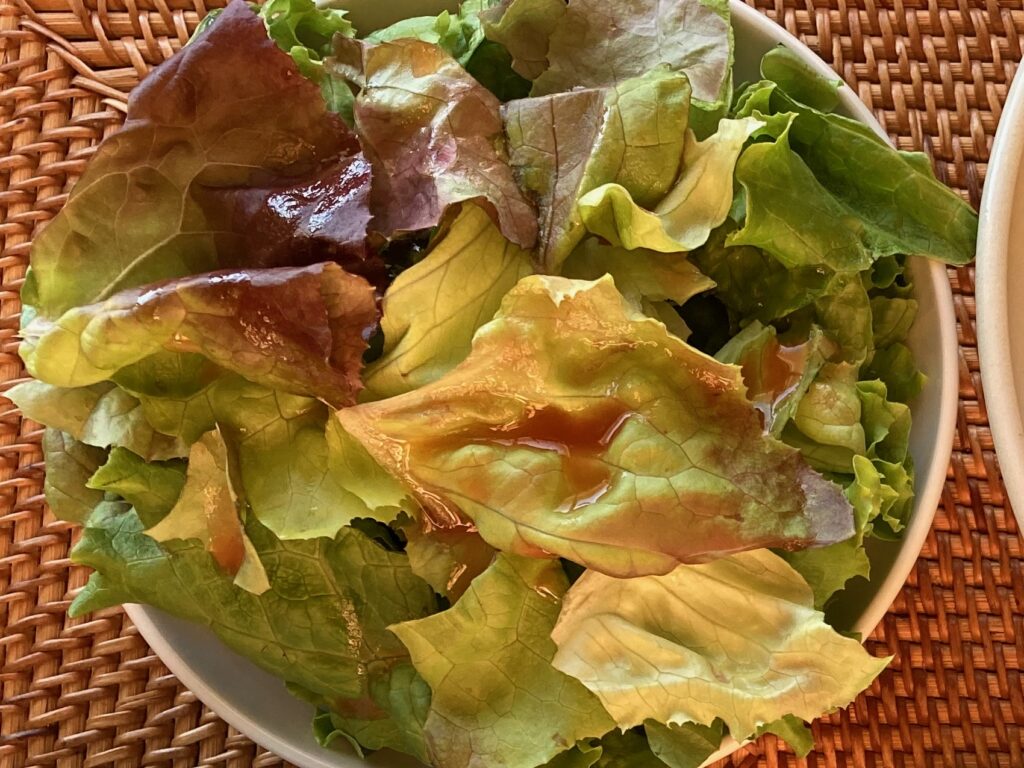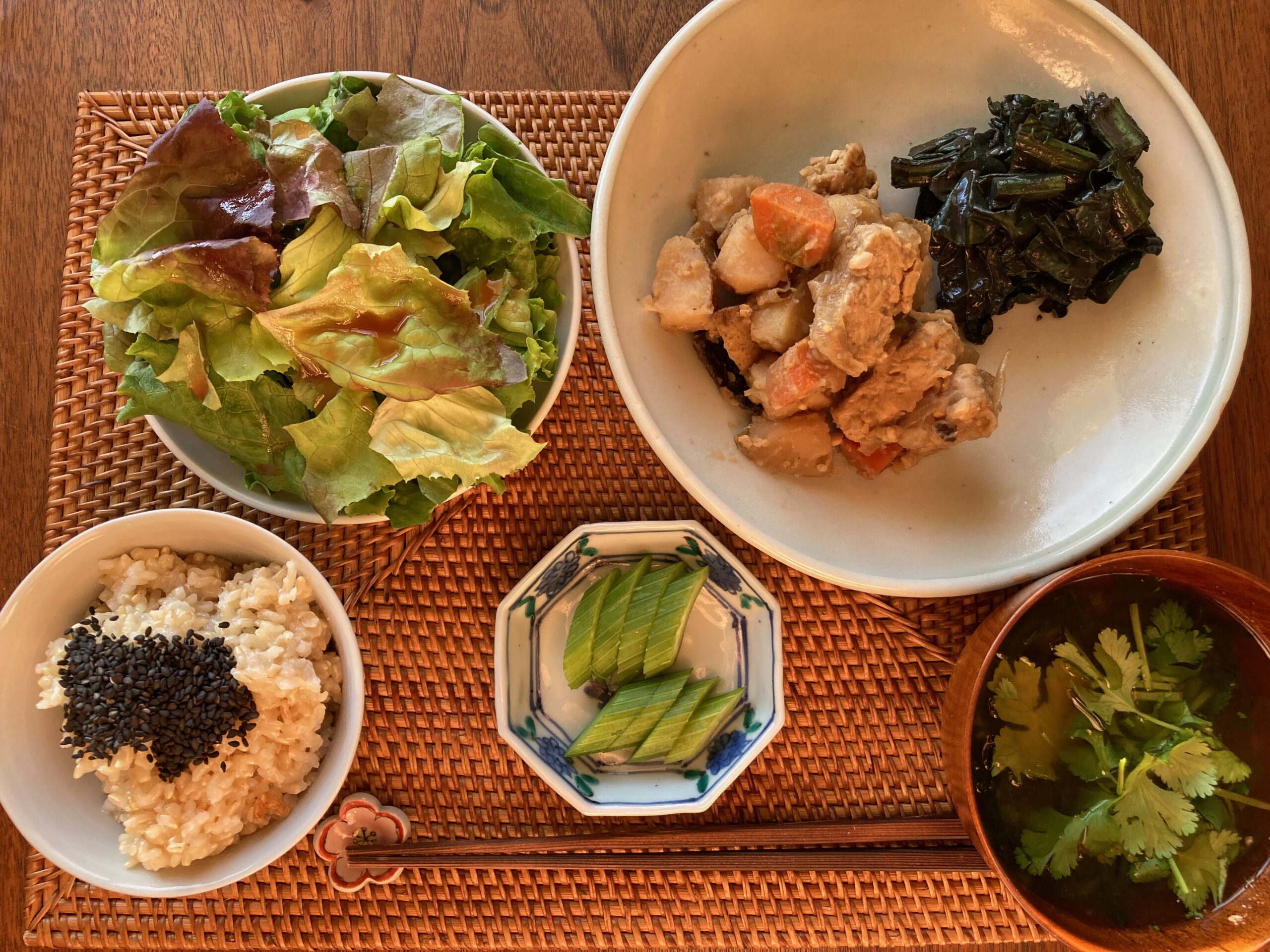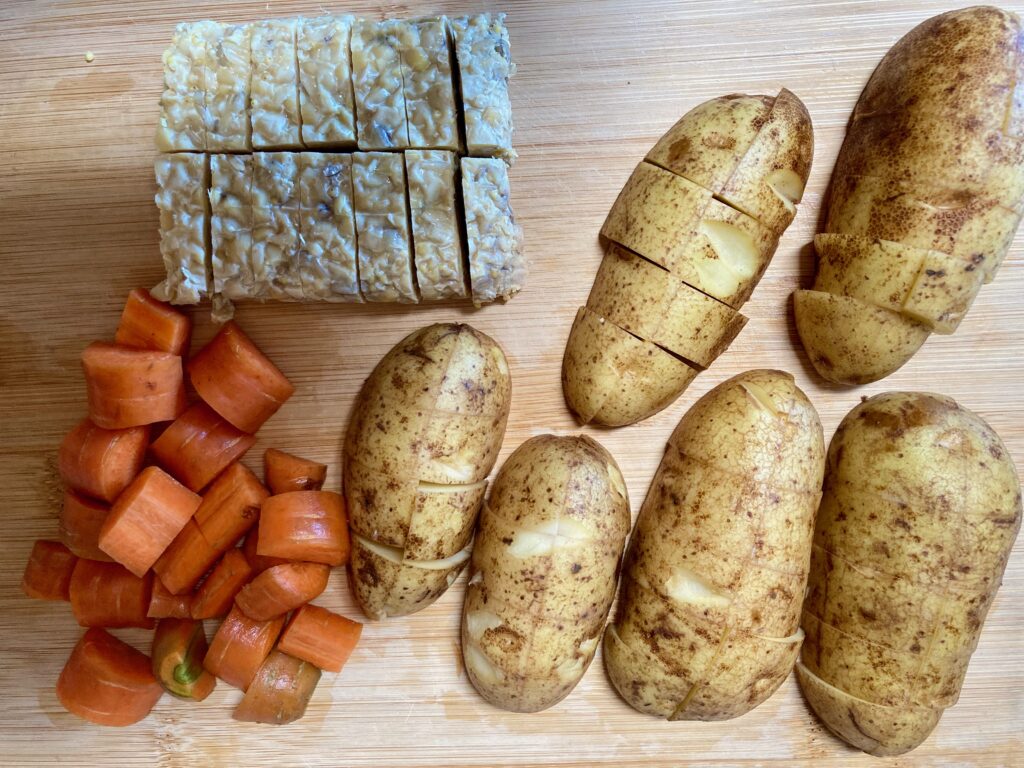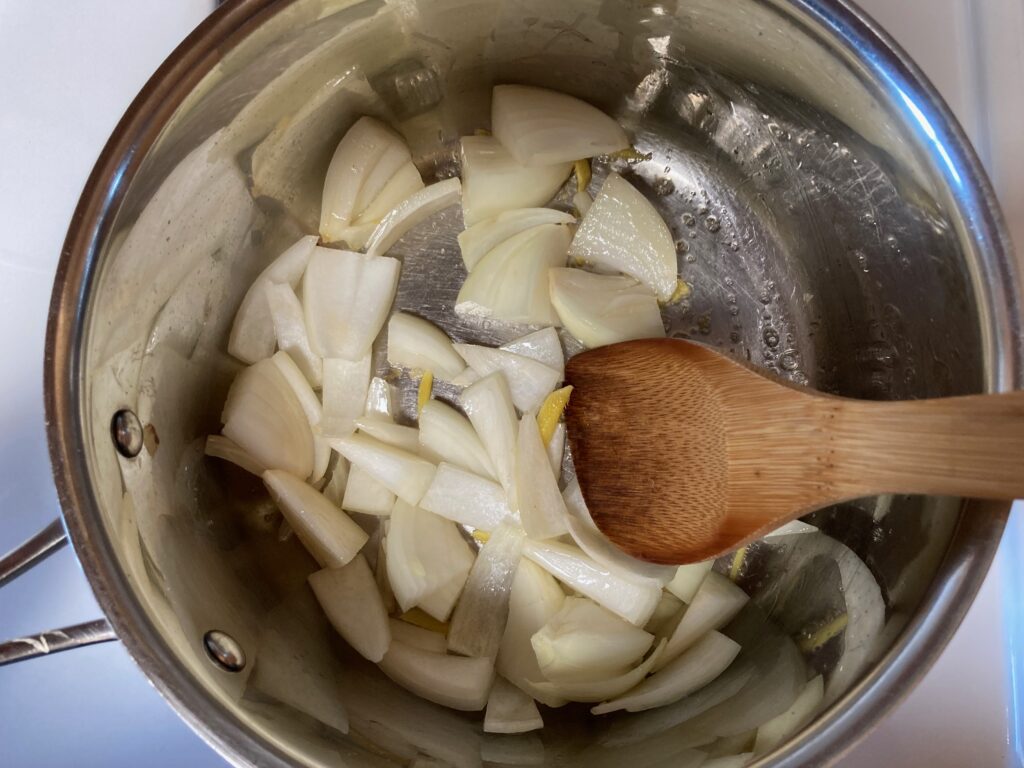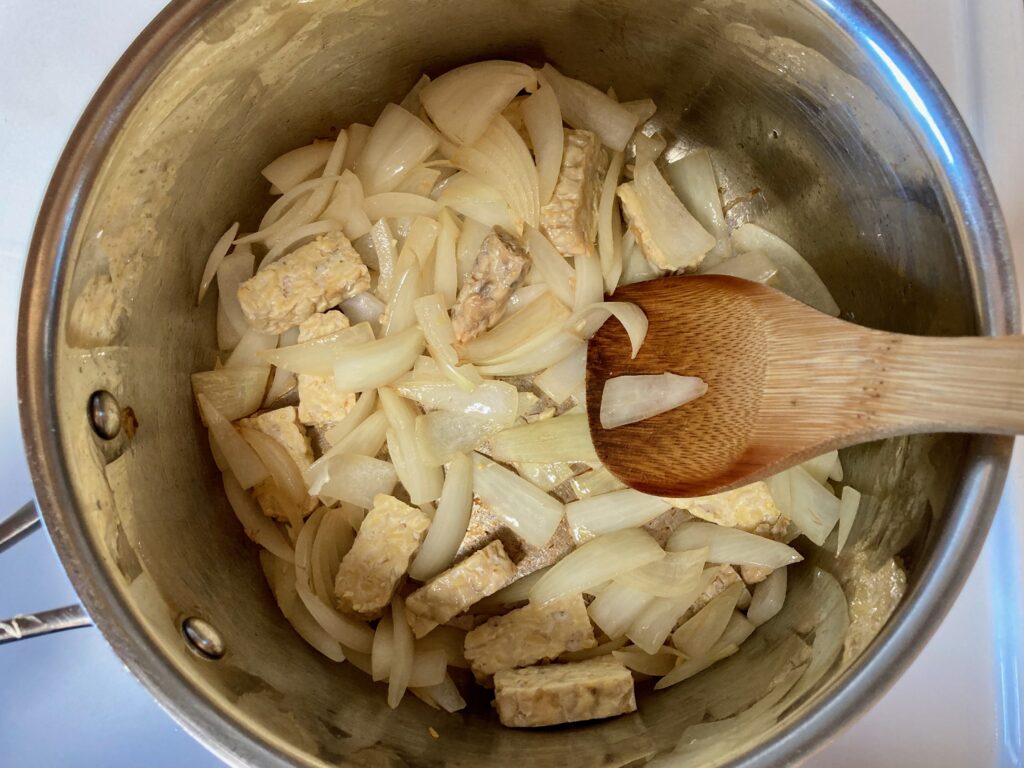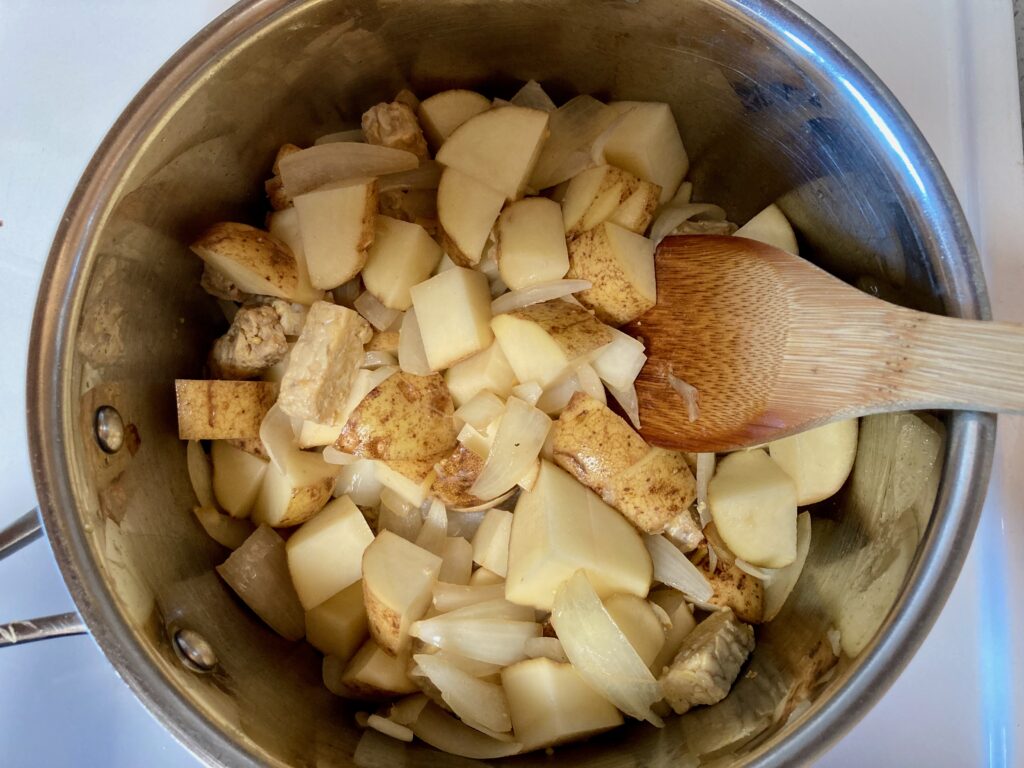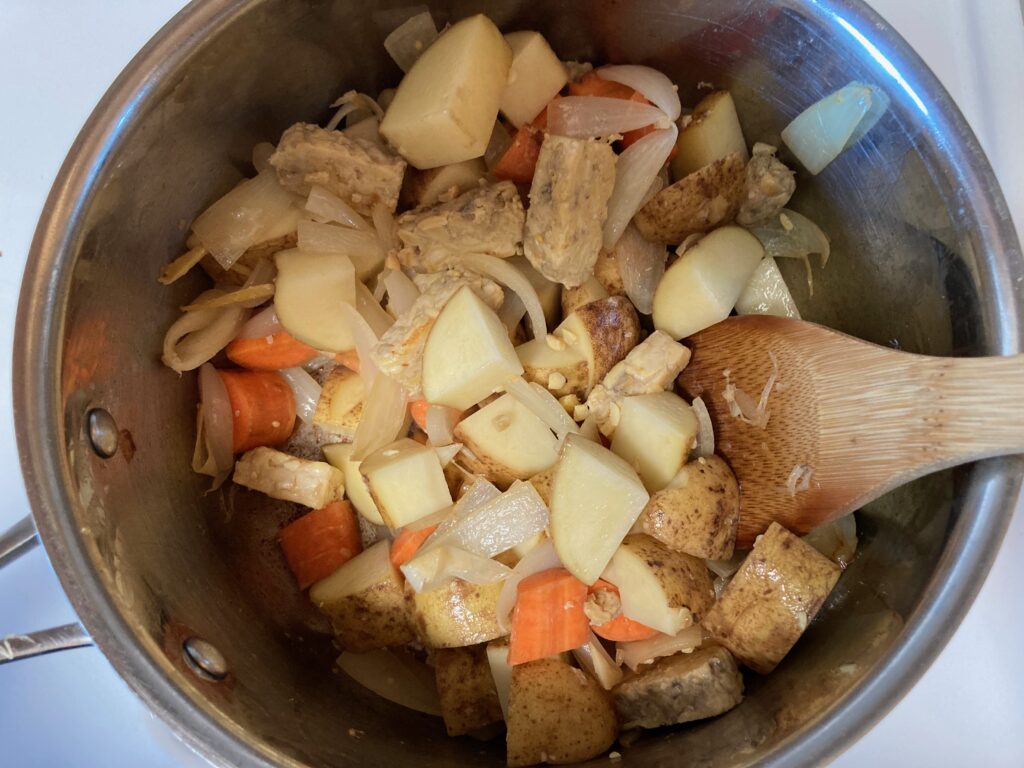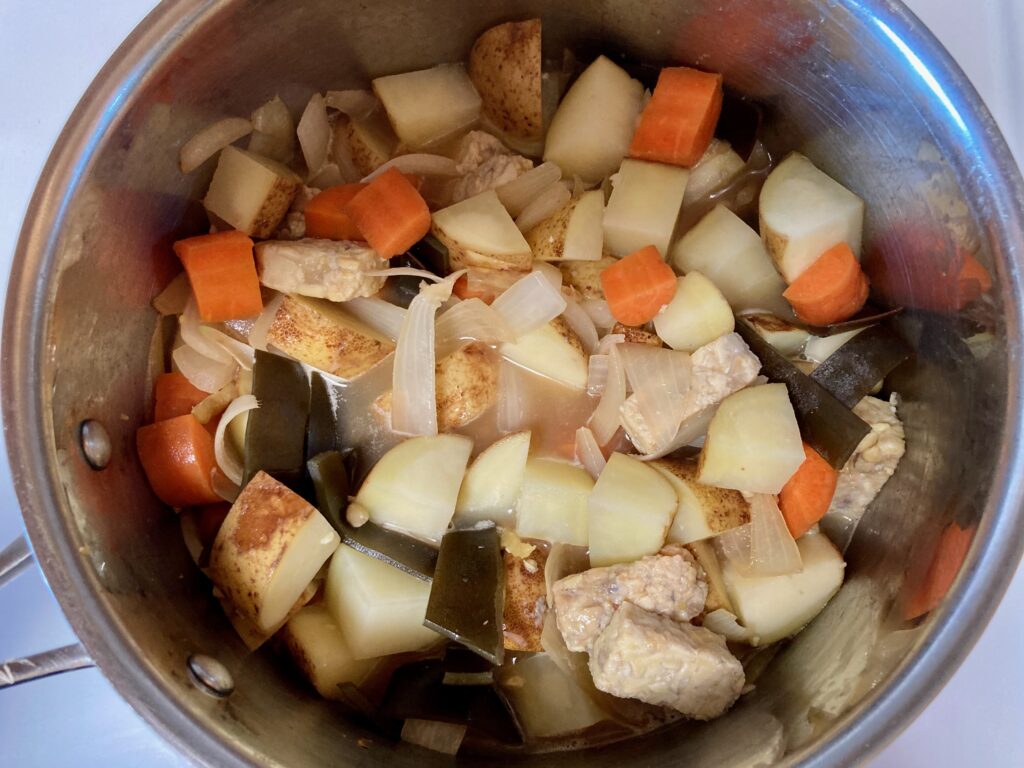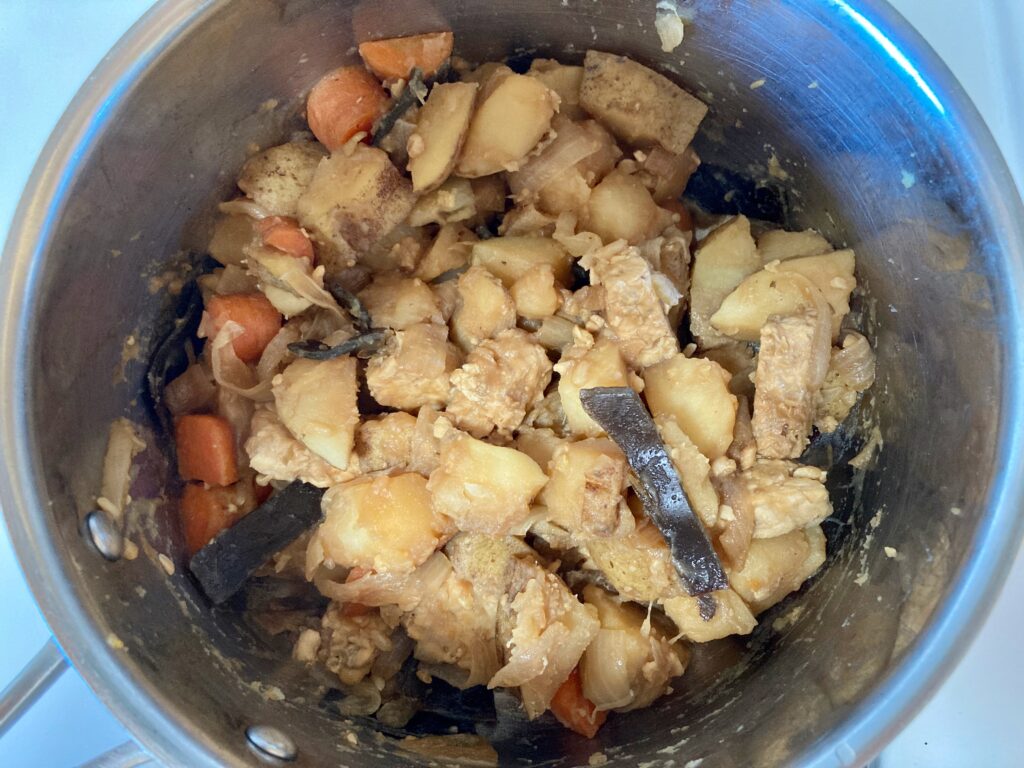The other day, my dear friend Katherina shared with me about her curiosity for Japanese cuisine. So, I decided to invite her for dinner to introduce her to some of its characteristics through a complete Japanese meal with some classic dishes.
As you can read in the “7 Essentials for Authentic Japanese Vegan / Vegetarian Cooking”Japanese meals are usually composed with rice, miso soup, a main dish, and a few other side dishes. One of the most important aspects of composing a meal is the variety and balance. In a single meal, we want to have dishes made with various cooking methods, as well as with different textures and flavors.
Today’s Menu
- Brown rice (Click here to learn how to cook delicious brown rice.)
- Miso soup with wakame seaweed and fresh cilantro (Basic recipe for miso soup here)
- Vegan niku-jaga with tempeh
- Steamed kale salad with black sesame tahini sauce (recipe here)
- Green salad with ume plum vinegar dressing
- Fermented celery
Classic and popular dishes
For the main dish, I decided to make a vegan version of “Niku-jaga” with tempeh. “Niku-jaga” is one of the classic and most popular dishes in Japan, where onion, potatoes, and carrots, are cooked with the thin sliced beef in soy sauce-mirin flavor. Since Katherina is from Hungary and potatoes are one of the significant vegetables in Hungarian cuisine, I wanted to make a special Japanese dish with potatoes. So, this is the perfect one to present!
For the side dishes, I made steamed kale salad with black sesame tahini sauce, which is the modulated version of cooked spinach “goma-ae” (salad with ground toasted sesame), one of the most famous side dishes. As both dishes are seasoned with soy sauce and mirin, I made a simple salad with ume plum vinegar dressing to introduce another flavor, and rice bran fermented celery which has a salty flavor.
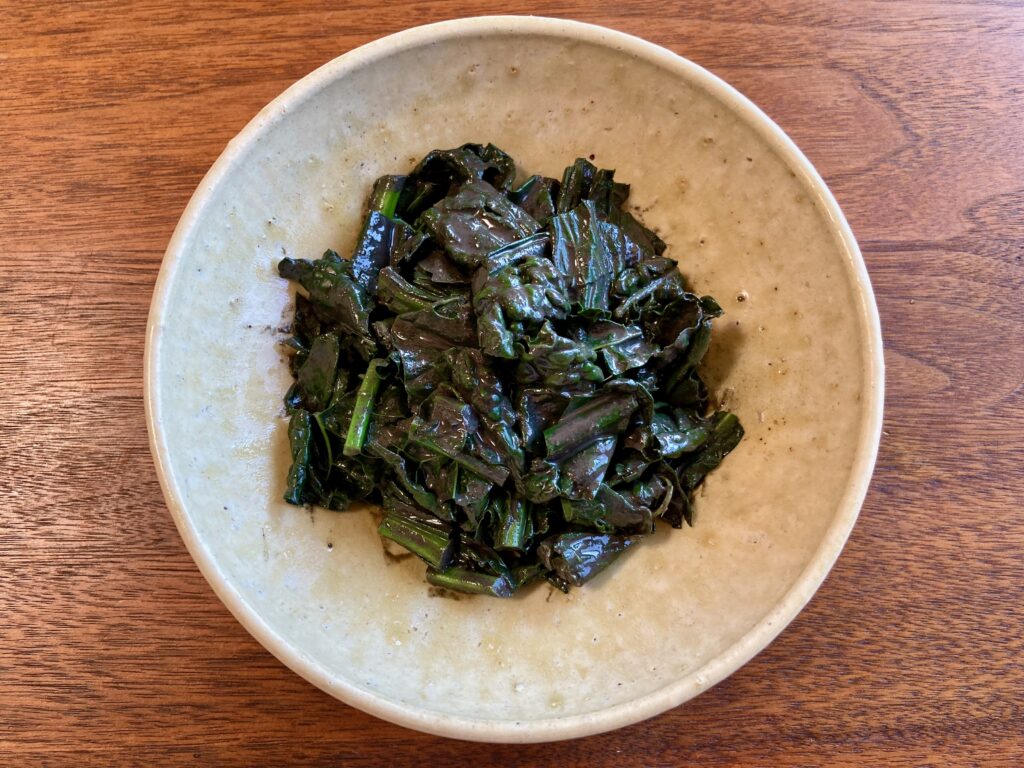
The variety and balance
This is how the dishes are cooked and flavored:
| Ingredients | Method | Flavor | |
| Rice | rice, toasted black sesame seeds | cooked | plain |
| Miso soup | wakame seaweed and cilantro | soup | miso |
| Vegan niku-jaga | tempeh, potato, onion, carrot | cooked | soy sauce-mirin |
| Steamed kale salad with black sesame tahini sauce | kale, black sesame | steamed | soy sauce-mirin |
| Salad with ume plum vinegar dressing | various green salads | raw | ume plum vinegar |
| Fermented celery | celery | raw/fermented | salt |
As you can see, there are a variety of ingredients made by a variety of preparations with a variety of seasonings! This is the alchemy to create balance. And through these varieties, we can receive different kinds and qualities of nutrition, as well as experience various texture and taste in our mouth, which also largely contributes to the sense of satisfaction.
Vegan Niku-jaga
Niku means meat, and Jaga is an abbreviation of potato (jagaimo). It is one of the classic and most popular menus for Japanese people. Since niku-jaga is usually cooked with thin sliced beef, along with onion, potato, and carrot with soy sauce-mirin flavor, for this vegan version, I used tempeh instead of beef and cooked it with kombu broth.
The making of this dish is quite simple:
- Cut one large onion, one large carrot (or two small carrots), and a few potatoes. If you have ginger, it will be lovely to add. In that case, slice a small piece of ginger into thin strings. Also, if you have the leftover kombu seaweed from making kombu broth, you can slice and add to this dish.
- In a heated pot, pour toasted sesame oil and add the ginger. Once the oil is heated, put the onion and sauté at medium heat until it becomes translucent.
- Add tempeh and sauté together.
- Add potatoes and sauté together.
- Add carrot and sauté together.
- Once all the vegetables come together in the pot, add 1 cup of kombu seaweed broth, then 1 tbsp of sake (optional), as well as 1 tbsp of mirin. If you add sliced leftover kombu seaweed, put them and mix with other ingredients. Put the lid on and turn the heat up.
- Once it starts to boil, bring the heat down to medium low and cook them for 10 minutes.
- After 10 minutes, mix the ingredients inside so that the bottom vegetables come to the top in order for all the vegetables to get evenly cooked. Put the lid back on and cook for another 5 minutes or so.
- Once all vegetables are soft, pour 2 tbsp of soy sauce, turn the heat up to medium and keep the lid off.
- Keep stirring gently once in a while so that all the ingredients absorb the soy sauce flavor.
- Once the liquid has evaporated enough, it’s done!
Green salad with ume plum vinegar dressing
My ume plum vinegar dressing is so easy to make, and it has a one-of-a-kind flavor unlike any other dressings. Its balance of saltiness and sourness brings such a unique flavor that wakes up our senses. As ume plum vinegar is the by-product of umeboshi (fermented ume plum), it has a strong detoxing nature.
Mix 1 tsp of ume plum vinegar with 1 tbsp of oil, and it is done! I use mostly flax oil in order to receive omega-3 fatty acids, but you can also make it with olive oil if you prefer a lighter flavor, or toasted sesame oil if you prefer a richer Asian flavor.
